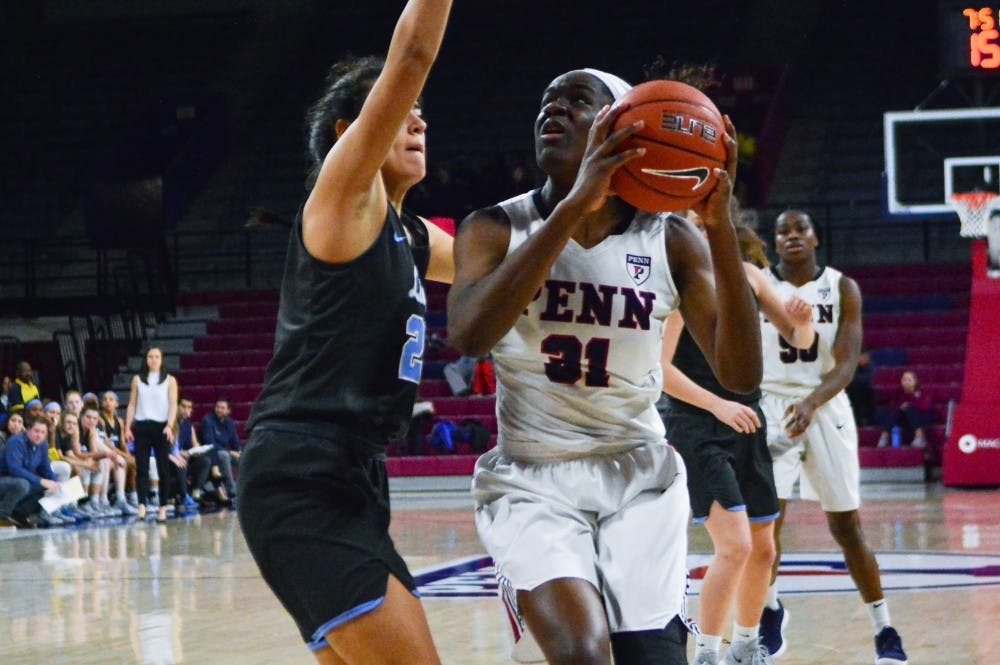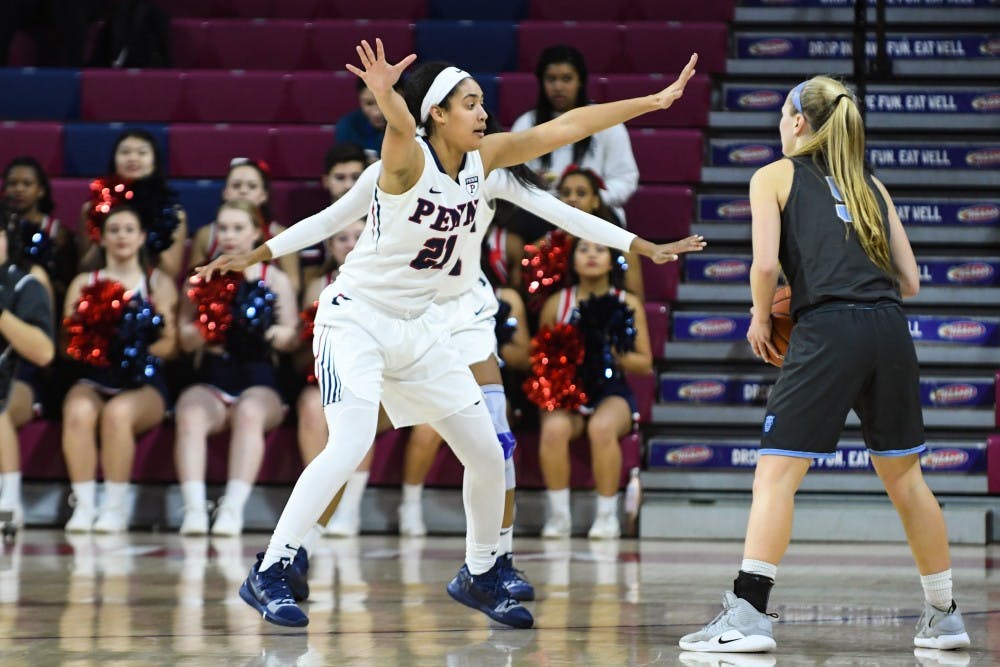
In addition to her 12 points, five rebounds, and three assists, sophomore center Eleah Parker was very active on the defensive end throughout Penn women's basketball's victory over Columbia.
Credit: Miranda GongIt’s no secret that Penn women’s basketball is dominant on defense. Entering Friday’s contest versus Columbia, the Quakers ranked fourth in the NCAA in opponents field-goal percentage (33.0) and fifth in points allowed per game (51.9). Sophomore center Eleah Parker, who is second in the country with 3.4 blocks per game, is a big part of the team’s success on that end, but it truly has been a group effort.
With that being said, there are still areas that Penn can improve upon defensively. Here is an analysis of the Red and Blue’s defense.
Interior defense
When the Quakers get set, it is nearly impossible to score on them inside. That is, of course, due in large part to Parker’s physical prowess. The sophomore swatted three shots and had two steals in 27 minutes on Friday. And while these numbers alone are impressive, they do not begin to tell the whole story of how significant her presence is.
Every time Parker was on the court, Columbia had no choice but to settle for outside shots. In all, the Lions shot just 35 percent from the field, which is significantly lower than their .403 mark for the season.
However, Parker is not the only one who makes it difficult for opposing teams to score in the paint. The team as a whole has done a nice job this season of collapsing on the ball when it comes down low. Friday was no different; time and again, a second defender came over to help, which often led to either an ill-advised shot or a bad pass.

Freshman guard Mia Lakstigala
Activity on the perimeter
Perhaps what is most special about Penn’s defense is how balanced it is. Not only are the Quakers stout on the inside, but they also put an unbelievable amount of pressure on opposing guards. This is what separates them from the rest of the defenses — and the rest of the teams — in the Ivy League. Their level of energy is almost never matched by the other team, and it certainly wasn’t matched by Columbia on Friday.
The Red and Blue made it a point to not let up after allowing just eight points in the first quarter. In fact, they didn’t give up a single point in the second quarter until there was 5:09 remaining.
While energy cannot be measured in the box score, steals and fouls can, and Penn excels at getting steals and limiting fouls. Against the Lions, Penn stole the ball nine times and committed just 10 fouls. As a result, Columbia took just eight free throws and could not find a rhythm for most of the game.
Getting set and defending the three
Nine fast break points and 29 percent from three-point range — that’s what Penn gave up against Columbia. Certainly, that’s a nice outing from a defensive standpoint. However, the few points at which the Quakers looked somewhat vulnerable were when they didn’t get back on defense and didn’t close out on three-point shooters.
The easiest baskets the Lions got were layups that came as a result of getting behind the defense. On several possessions, coach Mike McLaughlin motioned for his team to get back on defense so that Columbia couldn’t get any quick buckets. Whenever Penn made the adjustment to keep the offense in front, the Lions began to struggle.
In terms of three-point defense, Columbia had more open looks than its shooting performance might indicate. Particularly in the second half, the Red and Blue did not close out on the perimeter as quickly as they had in the first half, and Columbia ended up shooting 35.3 percent from deep in the final 20 minutes.
That may have been a result of the fact that the game was never truly within reach in the second half, but regardless, Penn will have to be ready to defend teams who are better from long range than Columbia.
The fact that these small vulnerabilities of the defense are being pointed out is a testament to how many things the group does well. They have allowed less than 63 points in every contest but one — which was against then-No. 1 Notre Dame — and at this point, a lockdown defensive performance is expected in every game.
The Daily Pennsylvanian is an independent, student-run newspaper. Please consider making a donation to support the coverage that shapes the University. Your generosity ensures a future of strong journalism at Penn.
Donate



